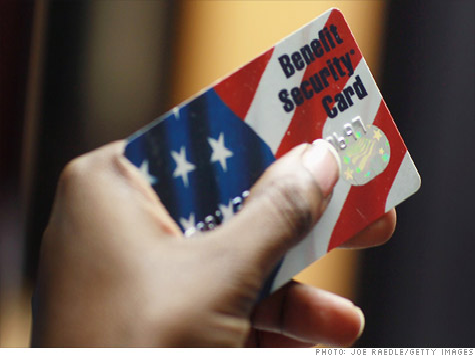
The country’s unemployment rate has been above eight percent for 43 months, which is longer than during any recession since 1980, and a Manhattan Institute study found that 15 percent of the country is now on food stamps, which is a record non-emergency high.
The study found that three years after the Great Recession began in December of 2007 and was declared over in June of 2009, 47 million people each month are using the Supplemental Nutrition Assistance Program (SNAP). According to the United States Department of Agriculture (USDA), which administers the program, “fewer than one in 10 Americans” were on food stamps before the Great Recession. Currently, more than one in seven Americans are on food stamps.
“There is much concern surrounding this unprecedented increase in America’s SNAP program, which began in 2008,” the authors of the study wrote. “Our results demonstrate that levels seen since the end of this recession are far higher than in prior recoveries.”
According to the study, food stamp usage “has been far higher both during the 2007-09 recession and thereafter than following prior recessions.” For instance, when the Great Recession began, 9.3 percent of Americans were on food stamps. In June of 2009, when the Great Recession was deemed to have ended, 11.4 percent were on food stamps. In June of 2012, 14.9 percent of Americans were on food stamps, which accounts for a 3.5 percentage point increase since the recession was declared over.
In some states, over twenty percent of the population is on food stamps. These states include Oregon, Mississippi, New Mexico, and Tennessee.
In Washington, D.C., 23% of the population is on food stamps.
The authors of the study found that food stamp usage decreased after recessions during the 1980s and wrote “the increase in food stamp usage following the most recent 2007-09 recession vis-à-vis the smaller increases in other recessions is troubling.”
“Designing and administering a social safety net is a balancing act,” the authors of the study wrote. “While assisting and empowering those who are truly in need, we must guard against creating perverse incentives to depend on public assistance for long term sustenance.”
The study found the increase in food stamp participation is in part due to a combination of factors that led to more “widened benefit eligibility” and a “concerted effort to expand access to benefits.”
To receive SNAP benefits, households must have “both a gross income under 130 percent of the poverty level and a net income under 100 percent of the poverty level. Households with an elderly or disabled member need only have a net income under 100 percent of the poverty line.”
In addition, “households in which all members receive public assistance (Temporary Assistance for Needy Families, formerly Aid to Families with Dependent Children, and Supplemental Security Income) are automatically eligible.”

COMMENTS
Please let us know if you're having issues with commenting.